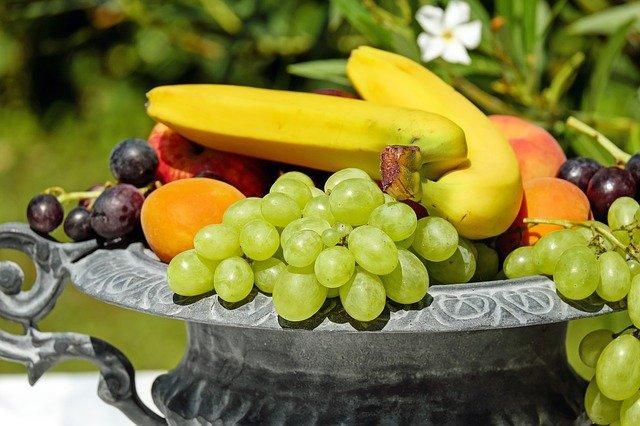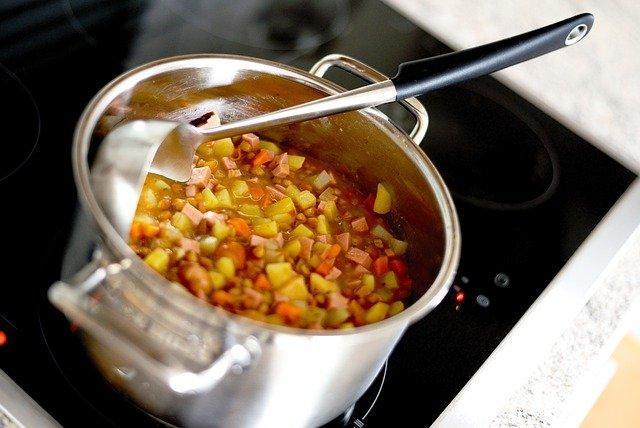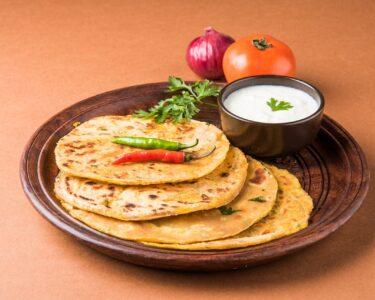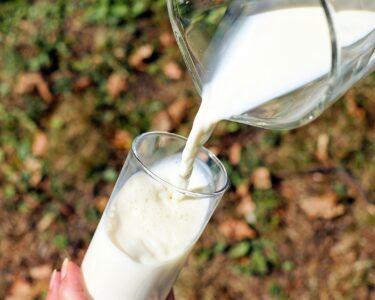A few days back, I got an interesting comment on one of my blogs. The person wrote being a diabetic, he is tired of hearing don’t eat this don’t eat that. He specifically mentions he gets hunger pangs often and has no clue what to eat.
The frustration is evident and quite obvious. I am sure he is not the only one. There are millions of diabetic patients who feel the same way.
No white rice, no potato, no mango, no banana, no sugar– that’s what your doctor has probably told you as soon as you are diagnosed with type 2 diabetes. Right?
So this blog is going to be all about –
- Step 1 : Understanding what is going wrong in diabetes
- Step 2 : The brief information about glycemic index and glycemic load that you must know to plan your menu
- Step 3: bursting the common diabetic diet myths with evidence and giving guidance on to maintain regular, doable Indian diet in diabetes in a FAQ format

Indian diet guide for Diabetes
WHO estimated 72.96 million diabetes cases in India back in 2014. It’s 2021, the number of cases surely has gone up by now. The National Diabetes and Diabetic Retinopathy Survey in 2019 showed that the prevalence of diabetes in India is about 11.8%.
It means you are not alone. However, that doesn’t make your struggle easy. I am sure you are trying hard to restrict yourself but somehow you are missing the fun of enjoying food.
Before we get into the Indian diet guide, you must understand –
- What is going wrong in your body with type 2 diabetes?
- Correct information of Glycemic Index (GI) and Glycemic Load (GL)
Step 1: What is going wrong with type 2 diabetes?
Your body is functioning fine to break the foods. Carbohydrates are getting digested and converted to sugar. However, this sugar should eventually get into the cells of muscle and liver from blood and generate energy. Insulin is responsible to lower the blood glucose level by increasing sugar uptake in cells.
Here in this step, you are facing the problem. Your fat, liver, muscle cells have become resistant to insulin. Therefore your blood sugar level always stays high. Your pancreas tries to overcome the situation by producing extra insulin. If this situation remains untreated, this can deplete the insulin-producing cells in the pancreas. Then in that case you got to depend on insulin injection.
Once the diagnosis is done at an early stage, diabetes medicines help to improve the insulin sensitivity of your fat, liver, and muscle cells. This will help the cells to start accepting the sugar from the blood and blood glucose level will come under control.

Step 2A: What you should know about Glycemic Index (GI)?
Being a diabetic you must have heard the term Glycemic Index. When you eat something, the carbohydrate present in the food gets digested and form sugar. GI is a value that measures how soon the food gets converted to sugar and raises the blood sugar level.
GI of the foods are categorized like this –
- High – value is 70 and above (bad for diabetic patient)
- Moderate – the value between 56- 69 (safe for diabetic patient)
- Low – the value 55 or less (best for diabetic patients)
Factors that change the GI of food –
Don’t come to a conclusion just by checking the GI value of a particular food.
The GI value of a food is altered by –
- Degree of processing
When food undergoes processing it reduces its fiber content and thus the carbohydrate present in the foods get easily digested and raise the blood sugar level. Therefore, ultra-processed foods are always high in GI value. Foods with moderate to high fiber content are always a safe choice for diabetes patients.
- Cooking method
Overcooking, baking, roasting helps to break the resistant starch (a compound that delays the digestion and release of sugar) present in the food thus give a higher GI value. Boiling retains the resistant starch, therefore a better cooking method. Frying needs oil which delays the digestion process and gives a steady rise in blood glucose levels.
- Food combination
When we eat food in combination the GI of the individual food changed. When you eat rice/ roti with dal/vegetables, the fiber content of the meal is enhanced. Therefore the GI gets reduced.
- Ripeness
Similarly overripe fruits contain a higher amount of sugar has a high GI value compared to the optimally ripen stage.

Step 2B: What is Glycemic Load (GL)?
GL is calculated considering the carbohydrate content and GI of that particular food. In short, it takes into account the quantity as well as the quality of carbohydrates to assess the impact on your blood sugar level.
Gradation of GL –
- Low – 0-10
- Moderate – 11- 19
- High – 20 and above
Since GI of the same food keeps changing based on various factors, GL gives better guidance for making food choices.
Step 3: How to plan an Indian diet for diabetic patients?
The goal of a diabetic diet is to maintain a steady blood glucose level throughout the day. The diet should be balanced and nutritious.
Let’s try to give answers to few frequently asked questions. This will help you to get full clarity on –
- What to eat?
- How to eat?
- How much to eat?
- When to eat?
Does a diabetic patient need a special diet?
Diabetic patients need no special diet. A balanced diet with quality foods and limited quantities is enough to fix your health. All you need is to be alert about your diet. A normal person can get away by eating something unhealthy but you can’t. That‘s all.
Good carbohydrate, protein, and fat with an ample supply of vitamins and minerals are essential for your diet like any other person.

Step 3A: Let’s start with Carbohydrate
Which is the best grain for diabetes?
Any grain containing a moderate amount of fiber is good for diabetes. That includes – semi-polished rice, poha, khoi, murmura, whole wheat flour (atta), suji, dalia, corn, jowar, bajra, raji, Kodo millet, quinoa, oats, etc.
However, depending on a particular type of cereal is not advisable. Try to bring variety in your cereal/grain choices.
Example –
- Consider having suji/ dalia/ oats/ poha/ ragi for breakfast
- Atta/ semi polished rice/ jowar/ bajra/ quinoa for lunch and dinner
- Popcorn/ makhana/murmura/ khoi for snacks

Is fiber good for diabetes? How much fiber a diabetic can eat?
Always remember moderate fiber-containing grain is your friend. No fiber grain is your enemy. Very high fiber-containing grain can make your life miserable.
Fiber remains undigested in our bodies. Therefore whenever you pick a cereal with moderate fiber content (suji, dalia, poha, semi-polished rice, wheat flour, oats, etc) it will slow down the digestion process and will release sugar in the bloodstream slowly.
No fiber-containing cereal (noodles/ pasta/ white rice/ refined flour) will immediately get digested and will raise your blood glucose level sharply.
High fiber-containing cereal (brown rice, millets) slows down the digestion process significantly. However, if you have weak digestive capacity then it is most likely to create complications like bloating, indigestion, gas, etc.
How to eat grain/ cereal in diabetes?
Always add vegetables and/or dal and/or nuts/ seeds and/or ghee with cereal. This will slow down the rate of digestion further and will prevent any blood sugar spikes.
Add 3 handfuls of vegetables and 1 tsp of ghee/oil along with one handful of grain.
Eg – If you are planning to have upma for snack or breakfast, use 1 handful of suji, 3 handfuls of chopped vegetables, and 1 tsp of ghee along with other spices to prepare the upma.
Or, for lunch, if you are having normal dal- chawal– sabji, make sure you follow the same 1:3 ratio. The rice/ roti should be one-third of the cooked sabzi that you are going to eat.

Rice or roti which is better for diabetes patients?
Rice or roti both are rich in carbohydrates and the staple food for Indians. You can pick whatever gives you comfort. Eat in moderation and always in combination with dal, sabzi, ghee, etc for better blood glucose control.
For rice eaters, semi-polished rice is a fantastic choice as it contains a moderate amount of fiber, not too less like white rice or not too much like brown rice.
If you are a roti eater, you may consider having normal atta roti or if you are traditionally habituated to have jowar or bajra roti, you may continue to do that as well.
You can’t stuff yourself with too much rice or too many rotis. A small to medium bowl of rice or 2-3 rotis along with a bowl of dal, 2types of sabzi and 1 tsp of ghee should be safe.
Which rice is good for diabetic patients?
Semi-polished rice is the best choice for diabetics as well as for non-diabetic people.
White rice loses its fiber content while processing and has a high GI value. On the other hand, brown rice contains too much fiber which may not be easy to digest. Many complain of heaviness, bloating, acidity, indigestion after switching to brown rice.
Eat semi-polished rice in moderation along with dal, loads of vegetables, etc.
Which type of millet is best for diabetes?
Apart from jawar, bajra , ragi there are many types of millets available in the market. Most of the millets have similar nutrition profiles. Therefore if you are comfortable eating millets since childhood you may pick any of your choices.
Millets are high in fiber. Fiber is good for diabetes but at the same time, it also hampers the absorption of calcium and iron. Therefore do not continue to eat the same millet every day. It’s very important to bring variety to your cereal choice.

Can diabetic patients have noodles/ pasta?
Noodles/pasta are generally made from either refined flour or from semolina. No prize for guessing that the noodles from semolina are a better choice than from refined flour.
Being a diabetic you may indulge in having noodles/pasta once in a while with applying a twist. Make sure you add 3 times more vegetables while making the noodles.
Avoid having instant packaged noodles/pasta at all costs. They are ultra-processed, contain no fiber, and are loaded with sodium.
Why is processed food bad for diabetes?
When food is taken for processing, high temperature, pressure, added chemicals, etc alter the nutritional profile of the food. It reduces the fiber and vitamin content. The food becomes easily digestible and creates a blood sugar spike. These foods are generally high in glycemic index.
Besides this, most ultra-processed food – biscuits, instant breakfast, cornflakes, muesli, instant noodles/ pasta/ soup/fruit juice, etc – contains refined flour, loads of refined sugar and refined salt, additives, preservatives, etc. These foods are generally high in sugar as well as sodium content. Excess sugar and sodium both are harmful to diabetic patients.
Which sugar is best for diabetes?
Sugar is a simple form of carbohydrate. Sugar is sugar, be it white sugar, brown sugar, jaggery, or honey. All give the same calorie and an almost similar spike in blood glucose level. The difference in color or texture does not make one markedly different from others.
However, 1-2 tsp of sugar can still be a part of a diabetic diet based on the condition of the patient.
Eg – Instead of having 2 Marie biscuits (contain 1 tsp of sugar along with refined flour) with sugar-less tea, it’s wise to add ½ teaspoon of sugar (2.5g) in the tea itself.

Is Honey okay for diabetes?
Honey is nothing but a form of sugar. If you are a honey fan, you may consider taking a teaspoon of unfiltered, unprocessed, wild honey replacing sugar.
Which sugar-free is the best in diabetes?
Artificial or natural zero-calorie sweeteners are very tempting for any diabetes patient. We love sugar and these sweeteners give you the taste without any guilt.
However, any type of sweetener is NOT advisable for diabetic patients. Shocked? Let me explain.
There are 3 reasons why you must stop using any artificial or natural non nutritive sweetener –
- These sweeteners react to high heat (during making cake, sweets, etc) and may produce cancer-producing compounds.
- People eat more going guilt-free by using sugar-free. Don’t forget the food is sugar-free, not calorie-free. Excess food will disturb your blood sugar level.
- People become addicted to sweeteners in the long run. Needless to say, addiction is not desired at any point of time.
Therefore be it stevia, sugar-free, or zero cal – avoid using all types of sweetener. Rather, if you get the craving feel free to add 1 tsp of sugar in daily diet.
How much salt should a diabetic have?
Most diabetic patients either already have high blood pressure or prone to develop blood pressure problems. Therefore It’s mandatory to control salt consumption along with sugar intake. Try to restrict yourself to 1 tsp (5g) of salt per day.
Step 3B: Let’s talk about protein

How important is the protein in diabetes?
Protein is the building block of our body and there is no exception for diabetic patients. Protein itself does not influence the blood sugar level much. A diabetic needs 0.8 g – 1 kg/ body weight of protein depending on his condition and activity level.
Therefore you do not need to go crazy for a protein supplement. A well-balanced diet is enough to meet the requirement. The best part of eating protein-rich food is that you feel full after eating it. Being a diabetic by now you know how a frequent hunger pang disturbs. So protein-rich foods like dal, sprouts, milk, curd, paneer, egg. fish, chicken, peanut, etc are your best friend.
Which Dal is good for diabetes?
Pick any dal of your choice. Most of the dal has a similar nutritional profile. However, you must keep variety in your dal choices. Feel free to have moong, masoor, tur, chana, rajma, chole, matar, horse gram, or their sprouts as per your preference.
Dal is not only rich in protein but also a good source of soluble fiber. Thus, while mixed with roti or rice, it delays digestion and promotes the slow release of sugar in the bloodstream.
Don’t forget to soak dal for at least 2-3 hrs and discard the water before you cook. This will help you to remove the anti-nutritional factors from the pulse. If you are someone who faces chronic gas, stomach ache, and acidity, cook the dal in an open pot and discard the white scum from the top for better digestion.
Also Read – Why and How to eat dal in diabetes?

How many eggs can a diabetic have in a day? Can eggs lower blood sugar?
Diabetes is often coupled with high blood pressure. Controlling BP and cholesterol is one of the major concerns in a diabetes diet. One whole egg a day is perfectly okay without causing any side effects. Yes, even if you have a high cholesterol level, you can still enjoy one whole egg a day.
A small study found eating an egg regularly significantly lower fasting blood sugar level.
Is dairy good for diabetics?
Milk and milk products have minimum impact on blood glucose levels. Thus it is safe for diabetic patients.
If you have no milk allergy or lactose intolerance, consider adding milk, curd, paneer, buttermilk to your daily diet.
Ideally, whole milk or full-fat milk works better because of its high-fat content. However, study shows toned, double toned and even skimmed milk and products has a positive impact on the blood glucose level. 250 – 500 ml of milk can be a part of your diet depending on other sources of proteins.
Can diabetics eat fish?
Fish is not only a great source of protein but also a wonderful source of omega 3 fatty acids. Feel free to add a good portion – 50-100 g of fish of your choice in your daily diet.

Step 3C: Let’s not forget fats –
Diabetes is a condition where fat is your friend. Fat helps to delay digestion and thus slowly release sugar in the bloodstream giving a steady blood glucose level.
However, if you are diabetic you might also have problems managing cholesterol and blood pressure. Thus you got be carefully manage the quality and quantity of fat in your daily diet.
Avoid fried foods as much as possible. Monsoon pakora once in a while is fine but it cannot be a part of your regular diet.
Use limited oil for cooking but try to add a teaspoon of ghee in lunch and dinner for steady blood sugar response.
What is the best cooking oil?
Stop using the colorless, odorless white refined oil for cooking. Use kachhi ghani or double-filtered oil for cooking. Pick your cooking oil as per your tradition. If you are from the south, feel free to use coconut oil. If from the west or middle part of India, filtered sesame oil, groundnut oil may be your choice. If from the eastern part consider using kachhi ghani mustard oil. Do not use olive oil for Indian cooking.
Also Read – How to pick the best cooking oil in India
Does Ghee cause insulin spike?
Good quality ghee or butter helps to control the blood sugar spike, thus shows better insulin response. Adding a teaspoon of ghee with rice/ roti for lunch or dinner is an excellent way to control blood glucose levels.
Does nuts affect blood sugar levels?
Nuts and seeds have a positive impact on blood glucose levels. Nuts and seeds are rich sources of protein and good fat. These are rich in omega 3 and omega 6 fatty acids. Nuts and seeds take time to get digested and control the sudden rise of blood sugar levels. Adding a handful of overnight soaked nuts and seeds in breakfast porridge or roasted nuts and seeds as an evening or late-night snack is a good choice.

Step 3D: Vitamins and minerals in a daily diabetic diet
Just like any normal human being, diabetic patients need an ample supply of vitamins and minerals. You must eat loads of green leafy vegetables, gourds, other vegetables, a moderate amount of roots, tubers, and seasonal fruits to meet the daily demand.
Vegetables and fruits provide vitamins and minerals as well as soluble and insoluble fiber. Just like dal, when rice or roti is combined with vegetables, it lowers the glycemic index and gives a steady glucose level in the blood.
Try to eat at least 3-4 types of vegetables regularly. A vegetable smoothie is a great way to add raw vegetables to the diet.
Do potatoes spike blood sugar?
Potato comes under high glycemic index food. That means when you have potatoes, they get digested very fast and shoots your blood glucose level. However, that does not mean you can’t have potatoes at all. Boiled potato with white rice may not be advisable for you but few small pieces of potato can easily be part of any mixed vegetable or dal.
Always remember, it’s the food combination that makes the difference, not any individual food.
Are bitter vegetables good for diabetes?
Bitter gourd, neem leaves, methi leaves, methi seeds, etc are found to be helpful for controlling blood sugar levels. But if you think having a cup of neem water or soaked methi water or bitter gourd juice in the morning is enough to fix your diabetes, you are keeping false hope. You must make dietary as well as lifestyle changes to bring the control back.

What fruits can diabetics eat?
Diabetic patients can eat all types of fruits including sweet ones. But you got to keep few points in mind –
- Eat two fruits a day – one sour/ citrus fruit (lemon/ mosambi/ amla/grapefruit/ guava/ orange etc) and any other fruit (watermelon/papaya/pomegranate/banana/chikoo/mango etc).
- Always have whole fruits not the fruit juice. The fiber of whole fruit will keep your blood sugar in control
- Eat the sweet fruits in moderation. Don’t start having 2-3 mangoes/ banana/ chickoo/ custard apple etc at one go.
- Eat fruits as a separate meal. Don’t finish or start any meal with fruits. Midmorning is the best time to enjoy your fruits.
- Eat one fruits at a time.
- Avoid consuming packaged vegetable or fruit juice as they are loaded with sugar.
Also Read The common mistakes of diabetic diet
Step 3E: Frequency of meals for diabetes patients
Can diabetics fast?
Usually, diabetic patients often complain about their frequent hunger. So keeping fast for long hours may be difficult for many. In addition, those who are dependent on insulin may try intermittent fasting only under expert supervision.
Otherwise diabetic patients who are on mild to moderate strength of medicine can try intermittent fasting. Study shows intermittent fasting helps to control the blood sugar level better. Many got good results after doing 16 hrs of fasting every day.
Should diabetics eat frequently?
Polyphagia that is frequent hunger is common among diabetic patients. Small frequent meal with proper distribution of carbohydrate load is effective as well as easy to follow for the long run. Consulting a qualified nutritionist will help you to plan the diet better.

Is diabetes reversible?
There is no cure for type 2 diabetes but recent studies show lifestyle modification that includes – dietary changes, ample activity, enough exercise, stress management, and deep sleep – can be effective to reverse diabetes.
Since few have managed to do it, you can make it happen too. Go slow and steady.
Is diet enough to control diabetes?
Dietary management is essential for diabetes but not enough. You must be active throughout the day. Remember sitting is the new smoking. Get up every 30-40 minutes, walk around for 2-3 minutes. Don’t mix activity with exercise. Engage yourself with some form of exercise on a regular basis. It could be as simple as going for walk or jog or run or yoga or anything that you enjoy.
Manage your stress. Stress increases the secretion of stress hormone which drops the insulin level. This makes your blood glucose level increase.
Try to sleep deep. Good deep sleep helps to control the blood sugar level. So in order to fix diabetes, you cannot keep any stone untouched.
Bottom line
Reversing diabetes is possible. Lifestyle and dietary modification can help you to control the situation to a large extent. It will help you to reduce your drug dosage. Instead of following an unnecessarily restrictive diet, adopt a doable Indian diet as suggested above. You are not alone. Bring discipline in life. Stay focused.






15 Comments